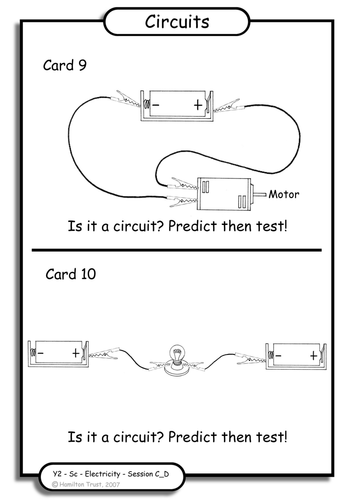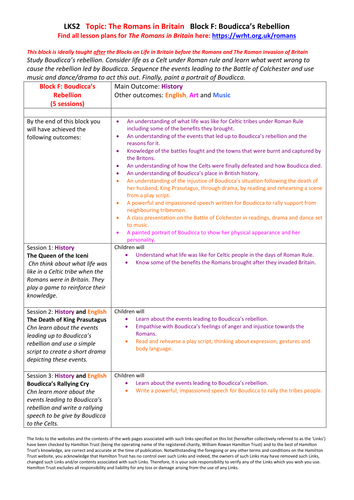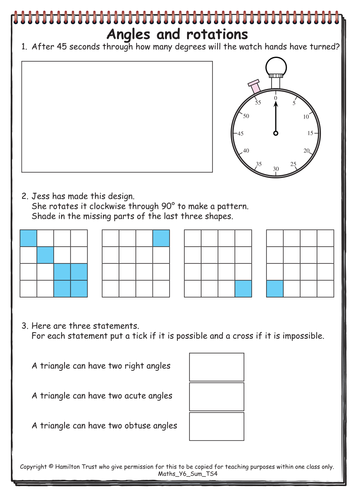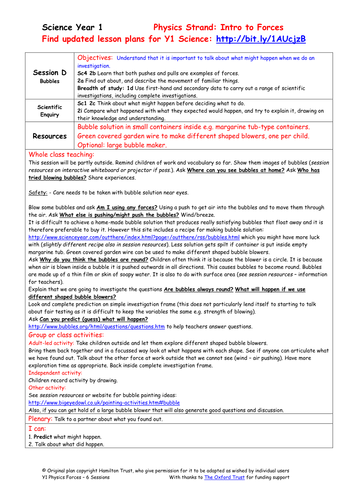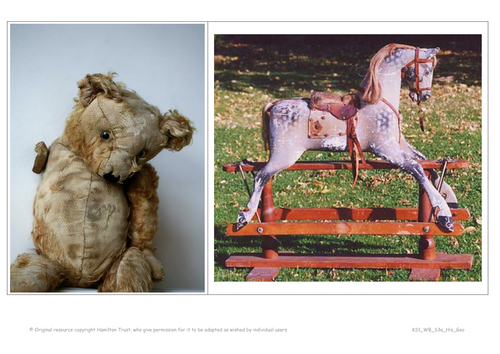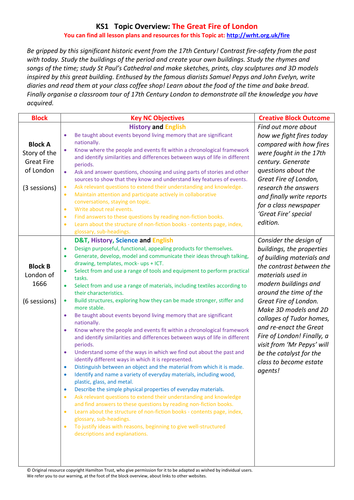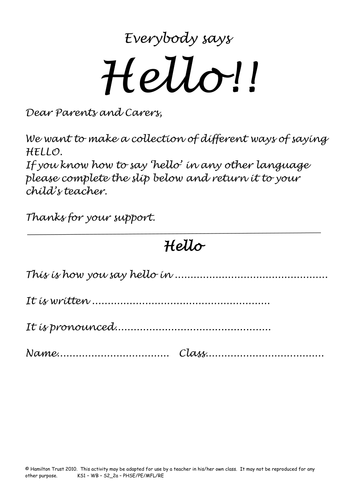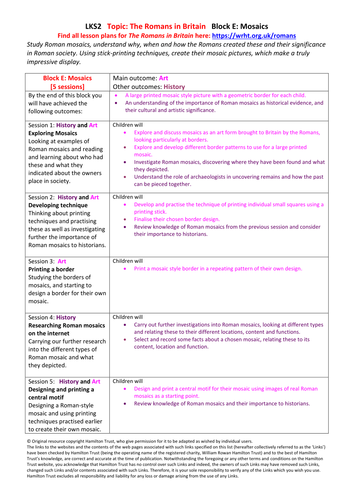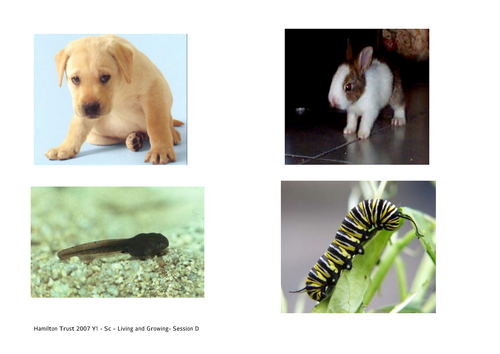
3k+Uploads
10009k+Views
11617k+Downloads
Cross-curricular topics

Animals, including humans - Excuse Me, Are These Your Teeth? - Year 4
Excuse me, are these your teeth? Who did this poo? Am I a predator?....Find the answers to these and other peculiar questions about digestion and food chains.
Includes 6 session plans & resources:
01 - Excuse me, are these your teeth?
02 - What happens to my food?
03 - What does the small intestine do?
04 - What did this poo?
05 - Who's the predator?
06 - Did you know...?
Hamilton’s science scheme provides children with a broad but comprehensive experience of primary science that systematically covers all of the National Curriculum for England objectives. Each year group is split into 6 blocks of 6 sessions, each of which can be completed within a half-term. We present them in a recommended teaching order, but you may adapt this to fit your requirements. Working scientifically, investigations and meaningful outcomes are fully incorporated in each block.
Find out more: www.hamilton-trust.org.uk/scites

Dig For Victory Again
During WW2 people were encouraged to dig up their gardens to grow food. Should this scheme or a similar one be re-introduced? What benefits would this bring? Children research WW2 posters and design one for a new campaign to encourage healthy eating.
Hamilton’s cross-curricular topics provide extensive planning resources to facilitate teaching a range of subjects under specific historical, geographic or thematic umbrellas.

Seasonal changes - Wonderful Weather - Year 1
Think about what you already know about weather, look at weather forecasts and video your own school weather forecasts; do weather observations and make collages about the seasons; have fun with shadows; make a class weather station that can measure rainfall, wind direction and temperature.
Includes 6 session plans & resources
1 - What do we know about weather?
2 - Weather Watching
3 - Shadow fun
4 - Setting up a weather station: measuring rainfall
5 - Setting up a weather station: measuring wind direction
6 - Setting up a weather station: make a thermometer box
Suitable for Year 1 pupils.
Hamilton’s science scheme uses hands-on investigative science activities to promote a deep understanding of scientific concepts and help children develop effective methods of scientific enquiry. Our scheme is fresh, original and free!

Roman army and busts
This block introduces the Roman Army. What was its organisation? What were the Roman soldiers like and why did so many Britons join the Roman army? Children learn about the army and then use this knowledge to help them understand how Roman busts differed from their Greek equivalent. They create their own Roman Bust in relief from clay.
Includes:
- Topic Overview
- Block Overview
- Lesson 01: Understanding why the Roman army was so powerful
Children learn about the Roman army and train together, being given orders by a centurion. They act out a battle.
- Lesson 02: Understanding the power of the Roman army through 3D art
Children explore some of the features of the Roman Army by looking at the differences between Roman & Greek busts.
- Lesson 03: Recording different facial expressions in sketchbooks and experimenting with clay
Children start to plan and design their Roman busts, thinking about the features and expression of a soldier in the Roman Army.
- Lesson 04: Creating a fierce depiction of themselves from clay
Children re-cap all they have learned about the Roman Army. Then they create a Roman bust in relief from clay.
Find more lesson plans and resources at www. hamilton-trust.org.uk.

Sound - Listen Up! - Year 4
The rock stars of the world need your help! They want their children to come to their concerts and rock-out, but they want to protect their precious ears! Find out all you can about sound; how it travels, pitch and volume. Then investigate materials to see which will provide the best insulation against sound. Be ready to present your ideas to a famous panel.
Includes 6 session plans & resources:
01 - Sound walk
02 - Good vibrations
03 - Pitch and volume
04 - Pardon?
05 - Ssssshhhhhh!
06 - The Rock Star Challenge
Hamilton’s science scheme uses hands-on investigative science activities to promote a deep understanding of scientific concepts and help children develop effective methods of scientific enquiry. Our scheme is fresh, original and free!

Simple circuits
Children discover for themselves how to make a simple circuit to light a bulb using a few basic components. Compare the circuits to a diagram of a simple circuit to see how they can be represented.
Suitable for Year 2 pupils.
Find other lesson plans and resources at www.hamilton-trust.org.uk.

Everyday materials - Let's Build - Year 1
Explore different materials and sort them into groups before writing songs based on their properties! Consider what it would be like if the tables were made of jelly or the chairs were chocolate! Then recreate the story of the three little pigs and predict what will happen to their houses.
Includes 6 session plans & resources
1 - What materials can we find?
2 - Matching materials
3 - Magnets and metal
4 - Sorting objects
5 - The three little pigs and their buildings
6 - The alternative three little pigs
Hamilton's brand new science scheme is now complete on our website. We have replaced the science planning materials with a completely new, and improved, set. The National Curriculum for England is now fully covered in regular 6-session blocks to fit into half-term slots. Find out more: www.hamilton-trust.org.uk/scites

Boudicca's rebellion
Children study Boudicca’s rebellion.
They consider life as a Celt under Roman rule and learn what went wrong to cause the rebellion led by Boudicca. They sequence the events leading to the Battle of Colchester and use music and dance/drama to act this out. Finally they paint a portrait of Boudicca.
Includes:
- Topic Overview
- Block Overview
- Lesson 01: The Queen of the Iceni
Children think about what life was like in a Celtic tribe when the Romans were in Britain. They play a game to reinforce their knowledge.
- Lesson 02: The death of King Prasutagus
Children learn about the events leading up to Boudicca’s rebellion and use a simple script to create a short drama depicting these events.
- Lesson 03: Boudicca’s rallying cry
Children learn more about the events leading to Boudicca’s rebellion and write a rallying speech to be give by Boudicca to the Celts.
- Lesson 04: The Battle of Colchester
Children learn about the battles fought between Boudicca and the Romans. Using soundtrack of Mornay’s dream, they perform a dance/drama of the Battle of Colchester.
- Lesson 05: The story ends and the legend begins
Children learn how Boudicaa’s rebellion ended and create a portrait of Boudicca showing her character as a warrior and a proud leader of her tribe’s people.
This block is part of our Key Stage 2 Cross-Curricular Topic The Romans in Britain.

Maths Y6 Summer Teaching Sequence 4
Revision: Shape (two days).
Children discuss turns of multiples of 90° on the clock face, and rotate shapes through 90°. They sort shapes according to their properties, e.g. number of right angles, obtuse angles, acute angles, lines of symmetry, and pairs of parallel sides. They practise measuring angles accurately with a protractor.
Find additional lesson plans and resources at www.hamilton-trust.org.uk.

Bubbles
Explore bubbles, the forces needed to make bubbles and the force that make bubbles round. Investigate the question: Are bubbles always round? What will happen if we use different shaped bubble blowers? Suitable for Year 1 pupils.
Find other lesson plans and resources at www.hamilton-trust.org.uk.

Lunch boxes and favourite juices
Children select ingredients for a healthy and an unhealthy lunchbox. Introduce the concept of 5 portions of fruit or veg per day.
Conduct a survey about favourite fruit juices and draw pictograms and block graphs. Draw and label healthy lunchboxes.
Suitable for Year 2 pupils.
Find other lesson plans and resources at www.hamilton-trust.org.uk.

How old is my toy?
How do we know that a toy is old? What happens to our toys when they get played with lots? Children explore different toys and look for the signs of age. They choose precise words and explain their reasoning in detail.
Suitable for Years 1 and 2.

The Great Fire of London - Diaries - Key Stage 1
Be gripped by this significant historic event from the 17th Century!
Find out about the famous diarists Samuel Pepys and John Evelyn. Write your own diary entries, including a realistic entry set during the Great Fire. Finally, share diaries in a ‘coffee house’ setting to celebrate the completion of this block.
Includes:
- Topic Overview
- Block Overview
- Lesson 01: Who ARE they?
Find out about famous diarists Samuel Pepys and John Evelyn; learn about the art of diary writing and write your own diary entry.
- Lesson 02: FREEZE!
Role-play scenes from the Great Fire of London that were captured in diary entries at the time; Perform and perfect your scenes; capture a key moment in a ‘freeze frame’ photograph.
- Lesson 03: What did you say?
Look carefully at your freeze frame pictures; write speech bubbles to depict the emotions experienced by the people in the scene.
- Lesson 04: Quills and ink!
Learn about the writing implements of the 17th Century; make your own quill and ink; write a realistic looking diary page about an incident during the Great Fire of London 1666.
- Lesson 05: Coffee House!
Use paint to recreate an authentic looking diary cover for your historic diary; read your diary to other children in a ‘coffee house’ setting to celebrate the completion of this block.
Find more lesson plans and resources at www. hamilton-trust.org.uk.

Electricity - It's Electric - Year 4
Learn all about electrical circuits and test materials ability to conduct electricity. Put your knowledge of circuits on display by building your own circuit to create a buzz-wire game. Then use your game to try to defeat a challenger. Who can remain ‘disconnected’ on the game? You will need to impress with your electrical knowhow.
Includes 6 session plans & resources:
01 - Electrical fun!
02 - Understanding electrical safety
03 - Building a circuit
04 - Good conductor, bad conductor?
05 - Showing what you know!
06 - It’s electric!
Hamilton’s science scheme uses hands-on investigative science activities to promote a deep understanding of scientific concepts and help children develop effective methods of scientific enquiry. Our scheme is fresh, original and free!

Rainforests - Recounts Weeks 5 - 6a
Read Where the Forest Meets the Sea all about the Australian rainforest. Explore changing verb tenses and the features of recounts. Then move to the Amazon River and follow the adventures of Blue Peter presenter Helen. Write and present a recount.
Suitable for years 3 and 4.
Find other lesson plans and resources at www.hamilton-trust.org.uk.

Observational drawing of a favourite toy
Children learn the word ‘texture’. They look carefully at their favourite toy and talk about the feel and appearance. They decide which media they want to use to represent it and do a beautiful drawing! They talk about their work and the work of other people.
Suitable for years 1 and 2.

We All Say Hello
Play circle games to practice greeting each other confidently. How many ways do children know to say hello in a different language? Learn 3 new ways.

Plants - What's Growing in Our Gardens - Year 1
Explore the outdoor area of school and look at plants that are growing. Talk about what they are and what they will look like when they are fully grown. Map out the school garden area and decorate with sketches, facts and labels. Plant chitted potatoes and set up a garden centre in the classroom. Examine a flower and make a large model in the classroom, do leaf rubbings and then create a large piece of art on the playground floor.
Includes 6 session plans & resources
1 - Going and growing outside
2 - One potato, two potato
3 - Garden centres and seeds
4 - What lives in the garden?
5 - What is inside a flower?
6 - What is inside a tree?
Suitable for Year 1 pupils.
Hamilton's brand new science scheme is now complete on our website. We have replaced the science planning materials with a completely new, and improved, set. The National Curriculum for England is now fully covered in regular 6-session blocks to fit into half-term slots. Find out more: www.hamilton-trust.org.uk/scites

Roman mosaics
Children study Roman mosaics, understanding why, when and how the Romans created these and their significance in Roman society. Using stick-printing techniques, children create their own mosaic pictures, which make a truly impressive display.
Includes:
- Topic Overview
- Block Overview
- Lesson 01: Exploring mosaics
Looking at examples of Roman mosaics and reading and learning about who had these and what they indicated about the owners place in society.
- Lesson 02: Developing technique
Thinking about printing techniques and practising these as well as investigating further the importance of Roman mosaics to historians.
- Lesson 03: Printing a border
Studying the borders of mosaics, and starting to design a border for their own mosaic.
- Lesson 04: Researching Roman mosaics
Carrying our further research into the different types of Roman mosaic and what they depicted.
- Lesson 05: Printing a central motif
Designing a Roman-style mosaic and using printing techniques practised earlier to create their own mosaic.
Hamilton’s cross-curricular topics provide extensive planning resources to facilitate teaching a range of subjects under specific historical, geographic or thematic umbrellas.

Adults and babies
Explore growing and how babies (human and animal) become adults. Play a game matching adults and babies. Children make simple zigzag book showing themselves at different stages of their lives. Suitable for Year 1 pupils.
Find other lesson plans and resources at www.hamilton-trust.org.uk.






